Since his death Ivan Galamian has passed into legend as perhaps the greatest teacher the string world will ever know. Barbara L. Sand asked some of his ex-pupils whether their former master really lived up to his reputation. Taken from the September 1997 issue of The Strad
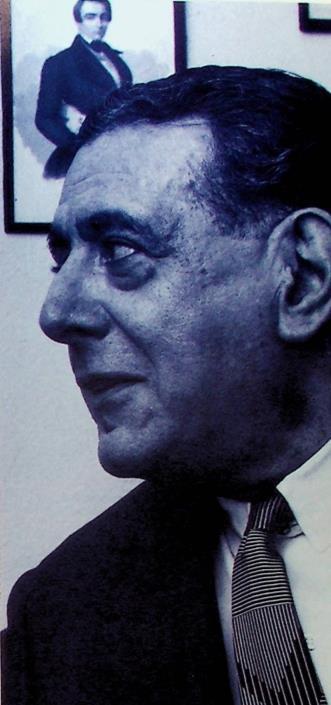
Read more student and player experiences in our Education Hub
’Teachers don’t make pupils famous - it is the pupils who make their teachers famous,’ remarks David Nadien, one of the stars in the galaxy of great violinists to have been taught by the legendary pedagogue Ivan Galamian. Nadien’s point may seem obvious on reflection, but it is often confused with its opposite. Leopold Auer, for example, is remembered as the teacher of Jascha Heifetz (not to mention Mischa Elman, Efrem Zimbalist and Toscha Seidel). No one would say that it was Auer who made Heifetz famous.
Granted that Auer’s influence was immense, Heifetz would surely have become a world-renowned virtuoso no matter with whom he studied. And while Carl Flesch’s towering reputation rests in part on his two-volume work The Art of String Playing and his editions of violin repertoire, his fame as a teacher began with Max Rostal in the 1920s and was later assured by such luminaries as Henryk Szeryng, Szymon Goldberg, Roman Totenberg, Bronislaw Gimpel and Ida Haendel.
In the US in the 20th century there are the examples of Louis Persinger, who made his name as the teacher of the five-year-old Yehudi Menuhin; Naoum Blinder, who taught Isaac Stern from the age of ten to eighteen and Dorothy DeLay, whose students have included Itzhak Perlman, Shlomo Mintz, Midori, Sarah Chang and a host of other virtuosos.
However, Ivan Galamian is perhaps an exception to this rule. He arrived in the US in 1937 and over the next 40 years, until his death in 1981, became the most powerful and sought-after violin teacher in the country. Many of his students have certainly been successful: during those years the highly regarded Leventritt Competition was won by no fewer than seven Galamian students: Itzhak Perlman, Pinchas Zukerman, Betty Jean Hagen, Sergiu Luca, Arnold Steinhardt, David Nadien and Kyung-Wha Chung.
Other students were winners of the Queen Elisabeth, Tchaikovsky, Carl Flesch and Wieniawski competitions - in fact all the international competitions of note. But although such students ensured that his reputation as a great pedagogue remained unchallenged, Galamian also made his name as a teacher who could produce excellent results from less less talented material. Indeed his teaching methods have been envied and emulated throughout his career and, since his death, have been perpetuated through the Meadowmount School of Music.
Born in Persia in 1903 to Armenian parents, Galamian was taken shortly thereafter to Russia, where the family settled in Moscow. The family was well-to-do, Galamian’s father being a successful businessman, and the boy’s early interest in the violin was encouraged by his parents. At the age of 13 Galamian was admitted to the Moscow Philharmonic School as a student of Konstantin Mostras, an Auer disciple. Galamian remained with Mostras for the next six years, throughout the First World War and the Russian Revolution.
’Galamian’s teaching method was Scare You to Death. You had better play perfectly or else his eyes would glare down at you.’
By the time Lenin moved the government from St Petersburg to Moscow in 1918, Galamian was 15 and the Communist regime was in full control. Affluent families, including the Galamians, were stripped of everything they owned, and Ivan himself was thrown into jail. Only the arts, and music in particular, were exempt from the repression of the Bolshevik regime. This proved to be the saving of the youth. Galamian had been a member of the opera orchestra of the Bolshoi Theatre, and it was the orchestra’s insistence that his participation was essential which rescued him from an open-ended jail term.
In 1922 Galamian emigrated to Paris. Soon after, he began taking lessons with Lucien Capet, professor of violin at the Paris Conservatory and author of a major work:La Technique Stiperieure de I’Archet. Capet’s bowing theories proved to be of great interest to Galamian, who remained with him as a student for two years. Capet took Galamian under his wing,
Introducing him to the music world in Paris and helping him to arrange his debut recital, which he gave in 1924. After a period of concertising, Galamian began to focus increasingly on his teaching with such success that by the time he moved to the US his reputation as an outstanding pedagogue preceded him.
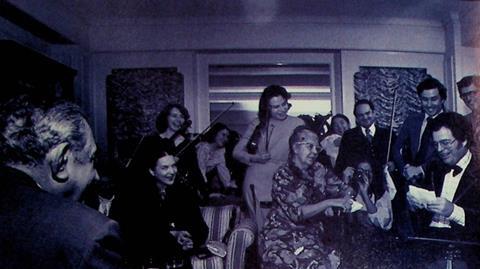
Galamian’s Manhattan studio almost immediately became a mecca for gifted students. Word of mouth via both parents and teachers produced a constant stream of young hopefuls, and even after Galamian was appointed to the faculties of both the Juilliard School and the Curtis Institute in the mid 1940s, most of his teaching continued to take place in his studio. In 1941 Galamian married Judith Johnson and in 1944 they established the Meadowmount School of Music in the Adirondack mountains, which was to become famous worldwide for its high standards.
David Nadien was one of a handful of violinists who lived with the Galamians while studying with the master. He later became concertmaster of the New York Philharmonic and held that post for some years before deciding to work as a freelance musician and teacher.
‘The apartment [the Galamian’s permanent home on West 73rd Street in Manhattan] had great long hallways and a lot of rooms,’ recalls Nadien. ‘Galamian had his studio in the front, and we - Helen Kwalwasser, Yura Osmolovsky and I - had rooms in the back where we practised three or four hours a day.
It was a relaxed atmosphere and all of us had fun. Galamian had two beautiful boxer dogs that he was devoted to, and they were a big part of the household. At one time it seemed that somebody was stealing food from the fridge. Galamian stayed up in the dark in the kitchen one night to catch the guilty party. One of the boxers had actually figured out how to manipulate the handle and open the fridge door.
‘Galamian was a good musician with excellent musical taste. The students who played best did not always do what he suggested, but if they sounded well he was wise enough to leave them alone. He taught by demonstration, and one had to use a grain of salt with some of the things he said. However, he gave me a general musical approach to understanding the repertoire, which I had not received from my previous teacher, Adolfo Betti. Galamian stressed warmth and good sound and unquestionably deserves a major place in the history of violin teaching.’
Many of Galamian’s students seem to have found him a more intimidating character than Nadien, perhaps because they did not live at such close quarters. ’His teaching method was Scare You to Death,’ says Itzhak Perlman. ‘You had better play it perfectly or else his eyes would glare down on you and make you feel like ”That’s It!” There was almost no room for give and take because he had a particular system that he applied to everybody. Some of his greatness lies in the fact that he could teach anybody, no matter how talented or untalented they were, to play the violin very well. Some would be more inspired, some would be better, obviously, but they would all be proficient at what they did when they studied with him.’ Even in photographs of Galamian, one can see what Perlman means about those eyes. They look limitlessly dark, deep and penetrating.
’I was nervous around Galamian when I was his student,’ confirms Arnold Steinhardt, first violinist of the Guarneri Quartet. He didn’t speak a lot during a lesson and hardly ever smiled. He never threatened or cajoled - he had enormous presence. His basic feeling was that anybody could become a fine violinist. The stage was already set in his studio, with photographs of Vieuxtemps and Corelli looking at you. He taught from 8am to 6pm seven days a week, and every lesson would last precisely 59 minutes - never more, never less. All Galamian’s students were given two basic principles, which he delivered in a heavy Russian accent. One was ”More bow!” and the other was ”Play so that the last person in the last row of the hall can hear you”. Both excellent pieces of advice.
’Later, after I had graduated, I came to know Galamian socially and found he could be both kind and funny. Sometimes we would play chess together at Meadowmount and he would like to have a glass of vodka with the game. “One glass is good,” he would say; ”two is better; three is not enough.” When I was no longer a student he was very friendly.’
James Buswell, who teaches at the New England Conservatory of Music, is another artist who studied with Galamian. ‘Not a day goes by that I don’t talk about him as a teacher, says Buswell. Once you have been under a master, it pervades all your own teaching.’ Buswell describes Galamian as a man with an analytical mind who tried to instill in students his profound philosophy of order.
Read: Violinist James Buswell has died
Watch: James Buswell, Leslie Parnas and Horacio Gutiérrez perform Brahms Piano Trio no.1
‘Galamian had a revolutionary technique for the bow arm, which was based on his knowledge of the laws of physics and anatomy,’ he says, referring to the critical ability’ to project the violin sound. ‘Galamian’s burden was the acoustic survival of the stringed instrument. He taught his students how to make the violin soar over an orchestra.’ Buswell adds: ‘He had incredible patience. If he had confidence in you and felt you were on the right path, he was ready to repeat the same thing over and over. He was a man of quiet determination who had a constant work ethic.’
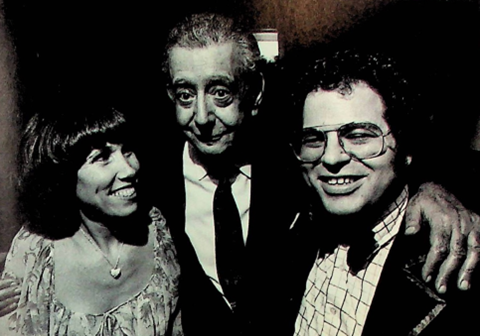
‘People always said Galamian could make a violinist out of a table,’ says Peter Oundjian, ex-first violinist of the Tokyo Quartet and now a conductor, who studied with both Galamian and Dorothy DeLay. ‘I think he could make anyone have a sound because he really had a method of position for the bow arm. But I remember one particular lesson in which I was having trouble with a passage in the Lalo Concerto. I played through the four etudes and the Bach I had been assigned and the whole Lalo. Galamian did not say anything, so I said to him:
‘Mr Galamian, in this passage in the last movement of the Lalo I am really having difficulty. Can you tell me how I can make it better?’ Galamian’s response was to say, soberly, “When you have played it 2000 times it will be much easier. Unfortunately, it’s not true. Now I am older I think it is more important to find out what you are doing wrong than to play a piece 2000 times and see if it gets easier.”
Dorothy DeLay, who now wears the mantel of the world’s most famous violin teacher, was herself a student of Galamian and later became his chief assistant. The two had a longstanding dispute over teaching methods in the early 1970s, but DeLay continues to speak of Galamian with great respect.
’He came from southern Russia, from an Armenian family. and in those families the father’s word is law,’ she says. ’If anyone in the family disobeys, it is a powerful insult to the father. Galamian’s background meant that he was a person for whom dignity was very important, and he felt that formalities, even with children, must be adhered to.
So there was that cultural difference between us. He preferred to work in straightforward ways on technique. His area of expertise was the bow and he was excellent with it. His students all had big, healthy sounds - and they were beautifully organised.’
Galamian’s teaching method has been summed up by Robin Stowell, editor of The Cambridge Companion to the Violin, as follows: ‘[It] embraces the best traditions of the Russian and French violin schools. For him, the key to technical proficiency is mental control over physical movement, but his is a flexible method with no rigid rules. More important is that the teacher promotes the maximum musical and technical development in each individual.’
Galamian himself carefully codified his methods in his book, Principles of Violin Playing and Teaching, which was written in collaboration with Professor Elizabeth A.H. Green of the University of Michigan. Green, who died in 1995, was also the author of Miraculous Teacher - Ivan Galamian and the Meadowmount Experience, an affectionate memoir published in 1993. The idea of putting Principles on paper originated with Green, who persuaded Galamian to dictate his thoughts to her for one hour each summer at Meadowmount from 1949 to 1957.
‘Some of Galamian’s greatness lies in the fact that he could teach anybody, no matter how talented or untalent they were, to play the violin very well.’
He wasted not one minute nor one word,’ she writes in Miraculous Teacher. ‘He knew exactly what he wanted to say; his ideas were organised sequentially and there was no mistaking the clear concept he had in mind for the introductory material of the first chapter.’ At the end of that first period of dictation Green noted that, like Galamian’s lessons, the session had lasted precisely one hour. Principles, with its detailed descriptions of how best to produce detaché, portato, spiccato, martelé, sautillé and legato bowings, among many other technical problems, is not intended for the non-professional, and it has become a classic of its kind.
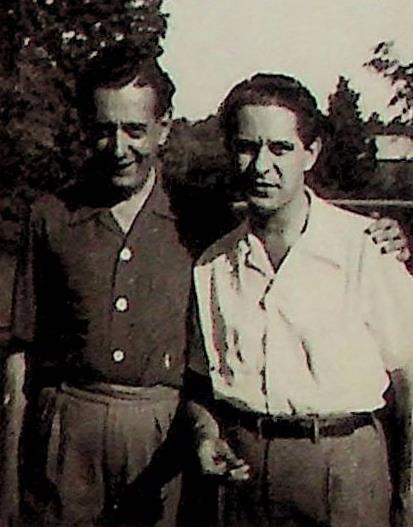
Of the Meadowmount School much has been written, including a detailed account by Henry Roth in the November 1991 issue of The Strad. A difficult interim period followed Galamian’s death in 1981, but in 1989 Owen Carman, a long-time faculty member, was named the school’s director, and it has flourished since then.
Carman, although never a Galamian student, benefited indirectly from Galamian’s teaching while a pupil of Leonard Rose, for Rose had been a Meadowmount faculty member and had adopted Galamian’s ideas on bowing.
According to Carman, nothing much has changed at Meadowmount since Galamian’s time. Students continue to come from all over the world, and high standards and strict discipline remain the order of the day. Students say that Galamian used to joke: ‘This is a concentration camp; this is where you learn to concentrate.’
Steinhardt, a veteran of several summers at Meadowmount, describes the place as exquisitely beautiful. ‘It was like being in a prison camp in a national park,’ he says. ‘It was not fun and games - you had to practise six hours a day. Galamian was very old-fashioned about girls and boys,’ he adds. ‘He would say: “Keep out of zee bushes! I don’t want to find you in zee bushes!”.’
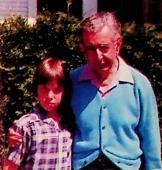
One feature of Meadowmount that has definitely remained the same is the presence of Galamian’s wife, who, unbelievably, at the age of 88 continues to work in the office and pay the bills as she did throughout her husband’s reign. ‘I am a trouble maker who bosses the britches off everybody,’ she says cheerfully.
‘With Owen the standards are the same as they were when my husband was alive, and he has every single one of his characteristics, including his energy. Owen walked in when I desperately needed help - he is simply fantastic. The one change is that I always wanted a piano department, and now I’ve got it.
‘I believe Mr Galamian almost knew the day and time of his death. A little while before he died he said to me: “Missy, do you know where my white kid gloves are?’’ Of course I did and I brought them to him. He laid them on the table, with the opening of the gloves toward me, and said: “Some day you may have to wear these. I would like you to remember that the safest way to keep Meadowmount is to have a hand of steel in a white kid glove.”
‘Mr Galamian was the most incredibly giving human being,’ she concludes. ’What he had in his life he shared. I was the luckiest woman in the world.’
Listen: The Strad Podcast Episode #10: Joshua Bell on Piazzolla
Read: Paul Makanowitzky: From prodigy to pedagogue
Read: Leonard Rose: All about the bow
Read more student and player experiences in our Education Hub
’
Topics
Technique: Playing with expression
- 1
- 2
 Currently reading
Currently readingIvan Galamian: hand of steel
- 3
- 4
- 5
- 6
- 7
- 8
- 9
- 10


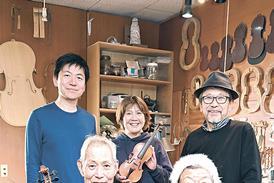

















































1 Readers' comment